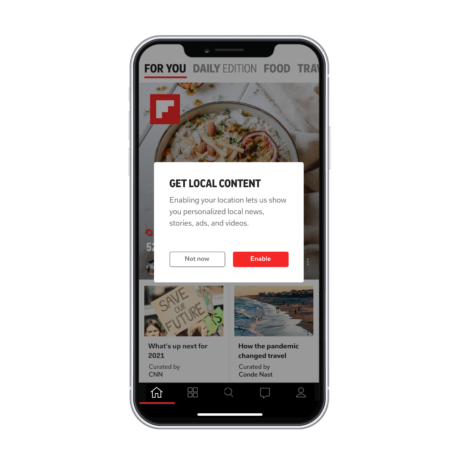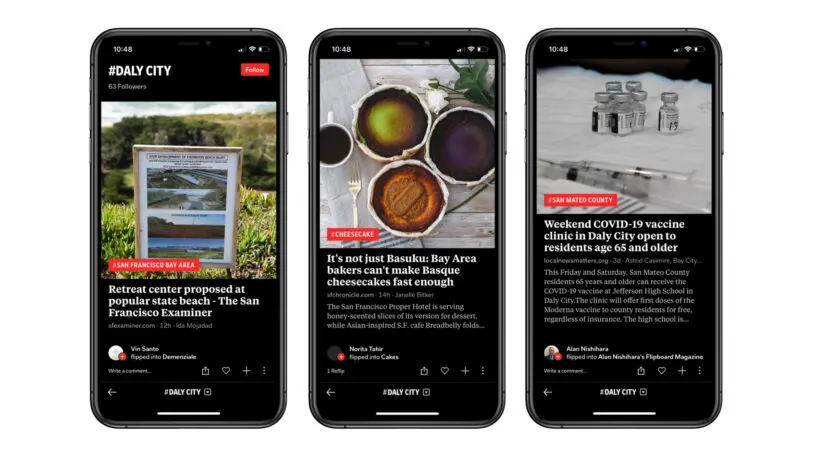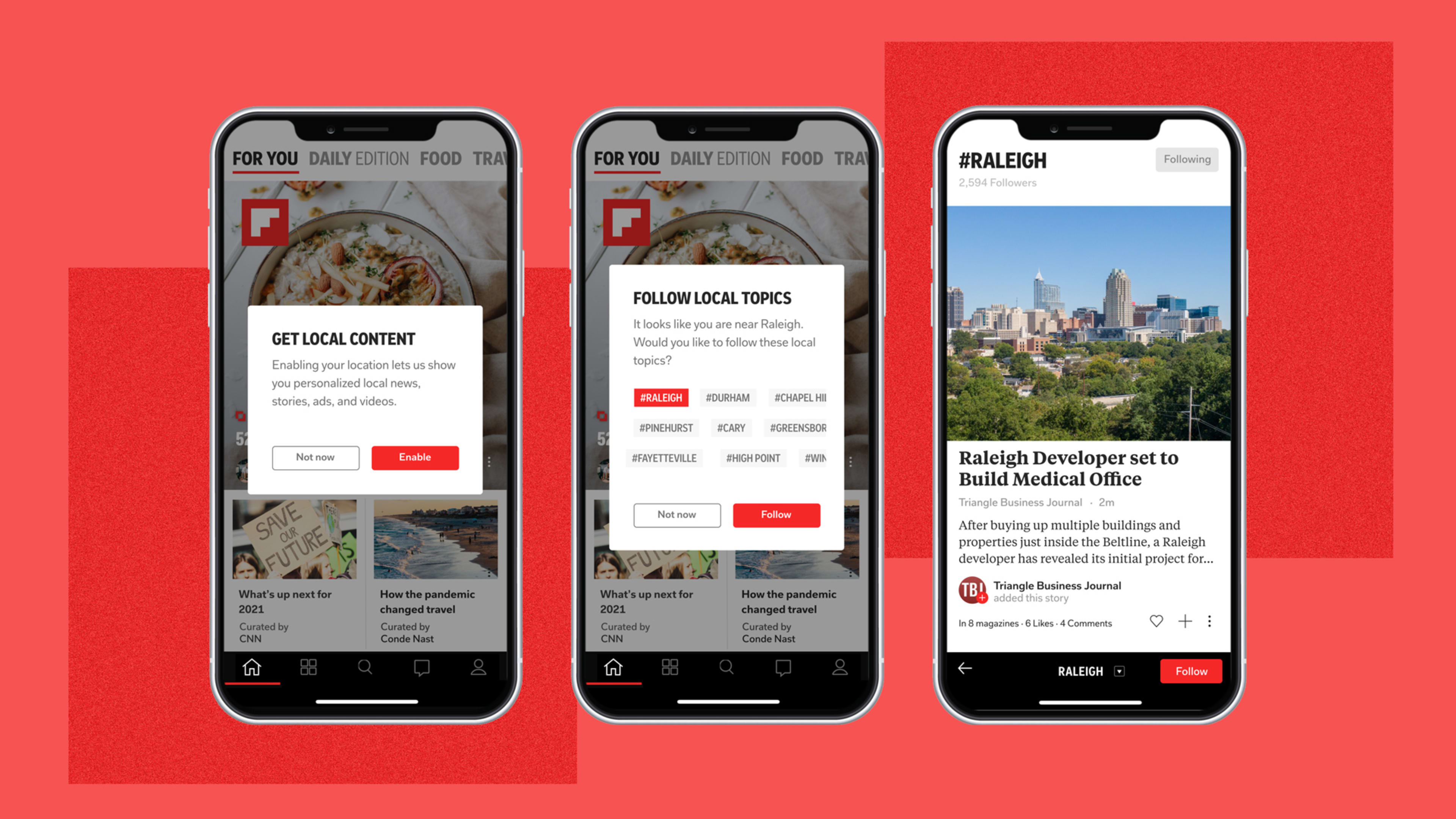In January 2020, Flipboard—the magazine-esque app for reading and sharing content from a multitude of sources—introduced a new feature designed to help people find local news. At launch, it covered 23 big cities, such as Boston, Chicago, Dallas, Los Angeles, New York, San Francisco, and Seattle.
With all due respect to those fine metropolises, they represent only a sliver of the local-news challenge, and possibly not the most important one. After all, they all have newspapers and other media outlets principally devoted to covering them; it’s not that hard to stay informed about what’s going on.
Since then, Flipboard has added more local areas, bringing the count to 73. And today, the number is growing exponentially: More than 1,000 localities in the U.S. and Canada will have their own Flipboard feeds. They includes places such as Twin Falls, Idaho; Casper, Wyoming; Bismarck, North Dakota; Concord, New Hampshire; and many, many more.
Give the app permission to detect your location, and it will show you the areas nearest you. Pick up to 15 of them, and they’ll appear in your list of feeds and be woven into your “For You” page.

Finding the local news that’s out there
I don’t have to dwell on the reasons why it might be helpful for Flipboard to bring local news to its users. Dedicated professional news outlets devoted to smaller municipalities have been dwindling for years. For me, the issue hits close to home: I live in a Bay Area suburb that—though far from tiny or rural—is a bit of a local-news desert. (It once had its own newspaper, but I can find no evidence of it existing after 1993.)
Over the past year, COVID-19 has only increased the importance of local news, such as updates on retail restrictions relating to the pandemic. Then there are natural disasters and other regional crises, which by their very nature generate news that’s both critical and local.
In fact, Flipboard’s whole local-news initiative was spawned by its need to make sure that its algorithms could handle stories relating to Hurricane Harvey back in 2017. That initiative “grew into making sure that we had other metropolitan areas more or less covered in a similar way, which then ended up in our launch last year,” says Flipboard Data Quality Analyst Marty Rose.
By bringing together news from a variety of sources, Flipboard can help fill in the growing gaps in local coverage. Along with the AI technologies it uses to automatically categorize the stories it aggregates, the company says that its Flipboard TV feature, which launched in February 2020, is helpful, since it involves collecting news generated by local TV stations.

“Say we have a feed for Syracuse, New York,” says Rose. “It would be the publishers that are specifically in Syracuse, but would also be articles about Syracuse that may have come from a newspaper like the LA Times.”
Lastly, the company’s decision to let users pick from a list of local feeds reflects the difficulty of guessing which nearby areas they care about. Someone who gets shown the Syracuse feed “may not know that we also have a feed for Utica, which is also in upstate New York,” says Rose. “But maybe that interests you, because you’re there two or three times a month, or you live halfway in between. Just being able to do a geo-radius on your position and find the local feeds that we have helps to improve discovery a great deal.”

Gottesman emphasizes, however, that Flipboard doesn’t keep or sell location data and only needs a “Zip-code-level” idea of where you are to serve up local news: “We’re not Google Maps. We don’t need to show you where you are on the road.” He also adds that the company isn’t doing this purely out of self-interest, and that there’s more to come.
“The release we did last year, you might call phase one,” he says. “This is what I would call phase two plus. But it’s a permanent investment. Flipboard understands how important local content is to the user, to a democracy, to the body politic. And we’ll always be investing in it.”
Recognize your brand’s excellence by applying to this year’s Brands That Matter Awards before the early-rate deadline, May 3.
